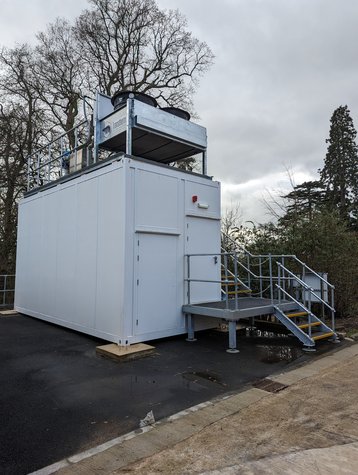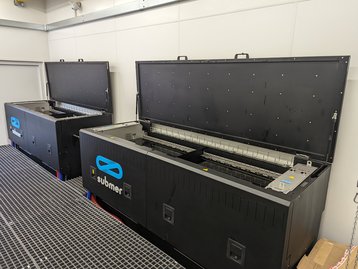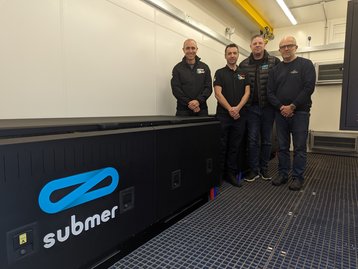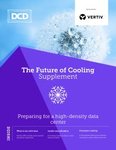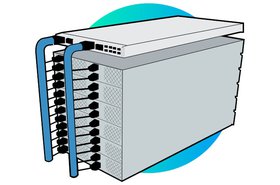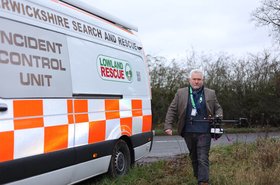Situated atop Whitchurch Hill in the peaceful Oxfordshire countryside, Bozedown House offers a glimpse of bucolic Edwardian England. Initially constructed in the late 1800s, the manor house was completely rebuilt following a fire in 1907, and its red-brick frontage and imposing gables have remained largely unchanged ever since.
But while the exterior of Bozedown House is a window into the past, those working inside are looking to the future. Since 1976, it has been home to the Pangbourne Technology Centre operated by lubricant specialist Castrol. Best known for making the oil that flows through your car’s engine, Castrol, now owned by BP, has big plans for Pangbourne as it looks to develop the next generation of fluids.
Given the automotive industry’s rapid transition to electric vehicles (EVs), it is no surprise that a big focus of Castrol’s work is creating the fluids required to keep EVs on the road. But it is also turning its expertise to the data center, and earlier this year took delivery of an immersion cooling pod. Provided by modular data center firm Sonic Edge and featuring immersion cooling tanks from another vendor, Submer, Castrol intends to use the 100kW ‘MegaPod’ to demonstrate the effectiveness of cooling fluids it has devised for servers. DCD scaled Whitchurch Hill - no mean feat given its surprisingly steep gradient - to take a look.
From electric vehicles to data centers
Recent years have seen liquid cooling techniques emerge as a realistic alternative to air cooling for data center operators looking to keep their hardware chilled.
Traditional air cooling systems often consume a large amount of energy and are becoming less effective as rack density increases. Added to this, high demand for AI products and services means data centers are being filled with more powerful components, such as GPUs, which generate more heat than their predecessors.
Liquid is better at dispersing heat than air, so liquid cooling techniques are seen as a possible solution for reducing emissions and potentially cutting energy bills. While take-up of these systems has so far been mixed - Uptime’s global survey of the sector last year found that 56 percent of data center operators were still using air cooling for their highest density (40kW and above) cabinets - interest in the technologies is growing.
Castrol is, perhaps unsurprisingly, keen to capitalize on this demand, according to Nick Barrett, the company’s senior engineer for advanced electrification testing. “Castrol sees a huge opportunity to diversify into industrial thermal solutions for data centers - a market that is large and growing fast - and has existing expertise in thermal management,” Barrett says.
Indeed, thermal management is a key issue facing OEMs developing parts for electric vehicles, and as a result, Castrol is building labs at the Pangbourne Technology Centre where components such as batteries can be put through their paces. The MegaPod forms part of this array of testing facilities. “We’ve been working in partnership with OEM car makers for 125 years, and with electrification coming in their needs are changing,” says Chris Lockett, Castrol VP for electrification and products innovation. “Part of that involves engineering cooling fluids for electric vehicles, and it makes sense to extend that work into the data center world.”
Getting immersed in immersion cooling
The MegaPod, which from the outside resembles a humble shipping container, houses two 50kW Submer Megapod immersion tanks for immersion cooling, a type of liquid cooling which sees IT equipment submerged in liters of dielectric, or non-conducting, fluid.
Simon Coggin, Submer sales director for UK & Ireland, helped deliver the project with colleague Franco Caroli, and told DCD the tanks are set up for single-phase immersion cooling, where the cooling fluid remains in a liquid state at all times. This differs from two-phase immersion cooling, which involves boiling the liquid in the tanks, causing heat to be dispersed as gas.
Explaining how the system works, Coggin said: “The immersion tank contains a cooling distribution unit, comprising a pump and a plate heat exchanger. The pump circulates the dielectric fluid within the tank, extracting heat from the servers.”
The heated dielectric fluid then passes through the plate heat exchanger, where it is cooled by water. Single-phase immersion does not require airtight vessels because “hardly any coolant evaporates,” Coggin says, and as such the tanks are known as “open baths."
Though single-phase immersion cooling is not as efficient as its two-phase counterpart, it may prove a more practical solution for the high-density data centers of the future, those running high-performance computing and AI workloads. This is because the cooling equipment required is simpler to install and run than for two-phase, and the fluids themselves often come with a lower price tag.
The long-term viability of two-phase immersion has also been called into question due to the environmental impact of the chemicals used in its cooling fluids. In late 2022 US manufacturer 3M announced plans to phase out poly-fluoroalkyl substance (PFAS) manufacturing from its product line by 2025, because of increasing concerns over their safety.
PFAS, or so-called “forever chemicals,” do not break down when released into the environment, and thus can build up in people or animals over time. 3M’s announcement that it is ending production of PFAS covers two compounds, Novec and Fluorinert, which are used in two-phase immersion. PFAS chemicals have also been classified hazardous by the US Environmental Protection Agency, and are heavily controlled in Europe, making their deployment more tricky.
No such problems impact single-phase immersion, where cooling fluids can be manufactured in a variety of more environmentally friendly ways. Submer has its own cooling fluid made out of a synthetic hydrocarbon, while others on the market are based on hydrocarbon compounds such as vegetable oils, mineral oils, and fluorocarbons. Another oil company, Shell, offers a range of immersion cooling fluid S3 X, which it says is made from natural gas using the company’s gas-to-liquids process.
The tanks in the Castrol MegaPod are each filled with one of the company’s two data center cooling fluids, known as DC15 and DC20. Castrol is tight-lipped on the make-up of the fluids (“That would be telling,” Barrett says when asked what goes into the products) but both are synthetic dielectric liquids designed with slightly different viscosities for different use cases and markets.
Both are capable of housing all types of electrical equipment (DCD asks if we can drop our phone in to test this out, but is told it may take a while to clean afterward), and the Submer pods are designed to cater to the standard 800mm deep servers you would find in the average rack, as well as larger 900mm models.
A mega opportunity
Castrol’s Barrett says the MegaPod will give the company the “capability to conduct fluid research and development, IT hardware testing and validation and demonstration of immersion cooling technology.”
It is the validation element that is likely to be most beneficial in the short term, with Castrol keen to use the pods to show that its fluids interact effectively with data center equipment. At the time of writing, a test run has been carried out at the pod ahead of the first customers being welcomed onto the site in the coming months.
Moving forward, Castrol hopes to use the MegaPod to demonstrate how data center heat can be reused. The system emits waste heat in liquid form, making it easier to capture and reuse than in other cooling systems.
Submer’s Coggin said partnerships like the ones with Castrol are key to encouraging more adoption of immersion cooling. Castrol’s fluids were validated for use with Submer equipment last year, and Coggins says one of the main barriers stopping companies from taking the, er, plunge is a lack of available kit. “One of the perceived drawbacks is the lack of an immersion-ready catalog,” he says. “We collaborate with component manufacturers to ensure end-to-end solutions and are seeing a lot more immersion-born SKUs and a growth in support.
“It’s an area where demand is growing fast, particularly in the UK. We’re seeing a lot of customers becoming more open to the idea of immersion cooling.”
This feature first appeared in issue 52 of DCD Magazine. Read the magazine in full here.

